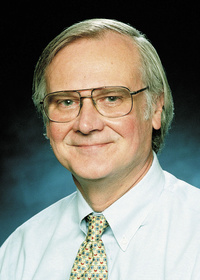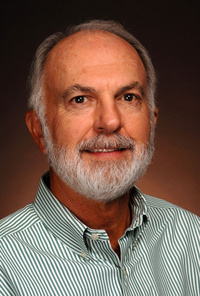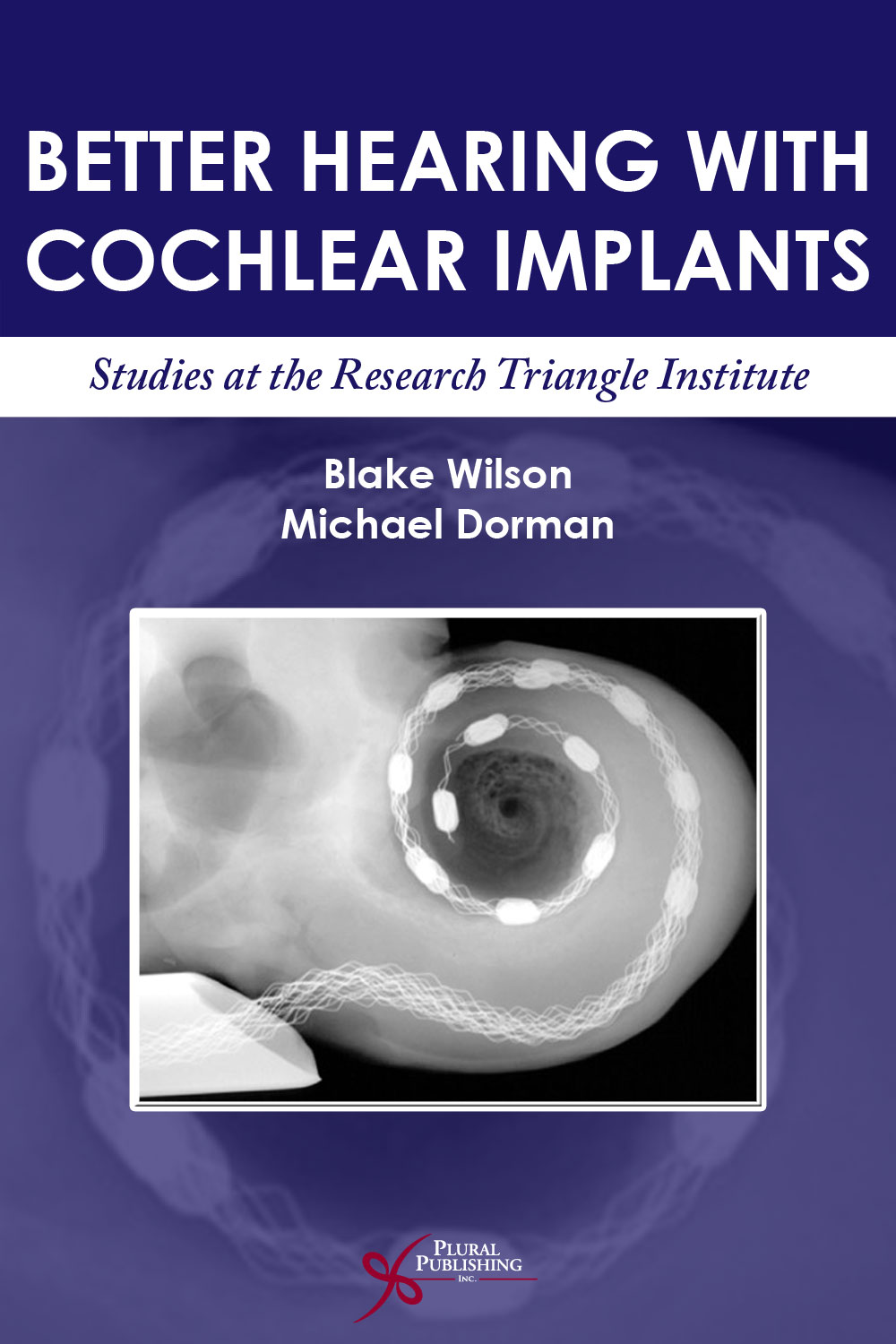
Better Hearing with Cochlear Implants: Studies at the Research Triangle Institute
First Edition
Blake S. Wilson, Michael F. Dorman
Details: 470 pages, B&W, Softcover, 6" x 9"
ISBN13: 978-1-59756-253-9
© 2012 | Available
Purchase
Better Hearing with Cochlear Implants provides a comprehensive account of a decades-long research effort to improve cochlear implants (CIs). The research was conducted primarily at the Research Triangle Institute (RTI) in North Carolina, USA, and the results provided key pillars in the foundation for the present-day devices. Although many of these results were reported in journal articles and other publications, many others were only reported in Quarterly and Final Progress Reports for the National Institutes of Health, which supported the RTI effort. In addition, the Progress Reports provided details that could not be included in the publications. The book is an annotated compilation of the most important sections from the most important reports that gives readers access to previously unpublished data and also a broad and logically organized overview of the research. Four main sections are included to describe the major lines of investigation: design and evaluation of novel processing strategies; electrical stimulation on both sides with CIs; combined electric and acoustic stimulation of the auditory system; and representations of temporal information with CIs. Large advances were made in each of these areas, and readers will appreciate the significance of the research and how the different areas related to each other. Each main section includes an introduction by the authors followed by two or more chapters, and the first chapter in the book describes the work conducted at the RTI in the context of the multiple other efforts worldwide.
The book may be used as a primary text on CIs, and it can serve as a multifaceted reference for physicians, audiologists, neuroscientists, designers of neural prostheses, and scientists and other specialists whose work is aimed at the remediation of hearing loss.
In all, a fascinating history is presented, which began with little or no speech recognition with CIs for any user and ended with high levels of speech recognition for the great majority of users, including the ability to converse with ease via cell phones. This is a long trip in a short time, and historians of science and technological developments will be interested in knowing how such a rapid development was possible, and about the twists and turns on the way to the destination.
Reviews
"Cochlear implants remain the only examples to date of an electronic device successfully replacing a human sensory end organ, and they represent one of the major medical advances of the twentieth century. This has been recently recognized by the Lasker Foundation by giving the prestigious Lasker-DeBakey Clinical Medical Research Award to Blake Wilson [author of this text], Graeme Clark, and Ingeborg Hochmair, "for the development of the modern cochlear implant- a device that restores hearing and speech to individuals with total or nearly complete deafness." The Lasker Awards are second only to the Nobel Prize in Physiology or Medicine for honoring advances in medicine and medical science. Indeed, fully a third of the Lasker winners go on to win the Nobel Prize at a later time.
One of the Lasker awardees, Blake Wilson, and Michael Dorman (who is another pioneer and major contributor to the development of cochlear implant technology) describe the body of research and development work done at Research Triangle Institute (RTI) between 1983 and 2006. This work was largely funded by a series of contracts from the National Institute of Healths Neural Prostheses Program. One important characteristic of [the program] was that a quarterly progress report (QPR) was required. These QPRs were for many years one of the best-kept secrets in the cochlear implant field...
[In] the publication of Better Hearing with Cochlear Implants...information is carefully organized according to theme and topic. The first part is about design and evaluation of novel processing strategies, and it includes information about the initial development of the CIS speech-processing strategy...Part two covers bilateral cochlear implant studies and focuses on the study of sensitivity to interaural timing differences as well as pitch ranking across the two electrode arrays. The third part examines combined electric and acoustic stimulation of the auditory system...The fourth and final part presents studies of the representation of temporal information with cochlear implants and the ways in which such representations might be improved by appropriate adjustments in simulation strategy.
As will become clear to the reader, the RTI group pioneered many of the approaches described in the book. The book is engaging, clear, and very well written. It is obvious that a substantial amount of reflection and effort went into preparing the book, this was not at all a simple but massive 'cut-and-paste' exercise from the QPRs. The authors present much information from the QPRs, but they also provide appropriate historical and technical context.
Besides the technical information, readers will find the book interesting as an important contribution to the study of cochlear implant research history...I highly recommend this book to any reader with a personal or professional interest in cochlear implants, either from a historical perspective of a strictly technical perspective."
—Mario Svirsky, PhD & Noel L. Cohen, Professor of Hearing Science, Professor of Otolaryngology and Neural Science, Vice-Chairman for Research, NYU Langone Medical Center, in Ear & Hearing (Vol. 35, No. 1) (Jan 2014)
"It is a unique insight into the painstaking efforts that allowed the development of successful speech coding strategies, and also clearly shows the pivotal role that the RTI had in making these advances possible. In most chapters details of the experimental protocols and the individual results of the study subjects are recorded, along with a succinct and accessible discussion. The chapters dealing with general developments and current issues are very useful for those seeing and advising patients on these areas. Overall the book represents a very useful reference that all implant centres should have access to. It also is a very reasonable investment for those wishing to begin to understand the theories and developments behind the main speech processing strategies in use today. It fulfills its purpose well."
—David Selvadurat, ENT Consultant, St Georges Hospital Cochlear Implant Programme, Tooting, UK, ENT & Audiology News, Vol 23 No 2 (May/June 2014)
"This book focuses on studies related to cochlear implants (and to a lesser extent auditory brainstem implants) performed at the Research Triangle Institute over two decades. By doing so, it provides the reader with an insight into how this field has evolved, culminating in the modern cochlear implant (CI)
. A detailed analysis of each subject and processor type is presented very clearly, using various figures
. This book beautifully distils the experience at the Research Triangle Institute."
—Y Ramakrishnan, The Journal of Laryngology & Otology
Acknowledgments
Dedication
Chapter 1
Overview
PART I
Design and Evaluation of Novel Processing Strategies
Introduction
Chapter 2
Comparison of Analog and Pulsatile Coding Strategies for Multichannel Cochlear Prostheses
Chapter 3
New Levels of Speech Reception with Cochlear Implants
Chapter 4
Evaluation of Alternative Implementations of the Continuous Interleaved Sampling (CIS), Interleaved Pulses (IP), and Peak Picker (PP) Processing Strategies
Chapter 5
Comparison of Compressed Analog (CA) and Continuous Interleaved Sampling (CIS) Processors in Tests with Seven Ineraid Subjects
Chapter 6
Evaluation of Other Promising Strategies
Chapter 7
Completion of Poor Performance Series
Chapter 8
Auditory Brainstem Implant (ABI) Studies
Chapter 9
Virtual Channel Interleaved Sampling (VCIS) Processors: Initial Studies With Subject SR2
Chapter 10
Identification of Virtual Channels on the Basis of Pitch
Chapter 11
Further Evaluation of VCIS Processors
Chapter 12
Design for an Inexpensive but Nonetheless Highly Effective Cochlear Implant System
Chapter 13
22-Electrode Percutaneous Study: Results for the First Five Subjects
PART II
Electrical Stimulation on Both Sides With Cochlear Implants
Introduction
Chapter 14
Speech Reception With Bilateral Cochlear Implants
Chapter 15
Sensitivities to Interaural Timing Differences
Chapter 16
Pitch Ranking of Electrodes for 22 Subjects With Bilateral Cochlear Implants
PART III
Combined Electric and Acoustic Stimulation (EAS) of the Auditory System
Introduction
Chapter 17
Psychophysical Studies Relating to Combined EAS
Chapter 18
Speech Reception With Combined EAS
PART IV
Representations of Temporal Information With Cochlear Implants
Introduction
Chapter 19
Temporal Representations With Cochlear Implants
Chapter 20
Strategies for the Repair of Deficits in Temporal Representations With Cochlear Implants
Chapter 21
High Rate Studies, Subject SR2
Appendix A. Partners in Research
Appendix B. Topics and Authors for the RTI Progress Reports
Appendix C. Publications Resulting from the RTI Projects
Appendix D. Contents of the RTI Progress Reports Sorted by Topic
References
Index
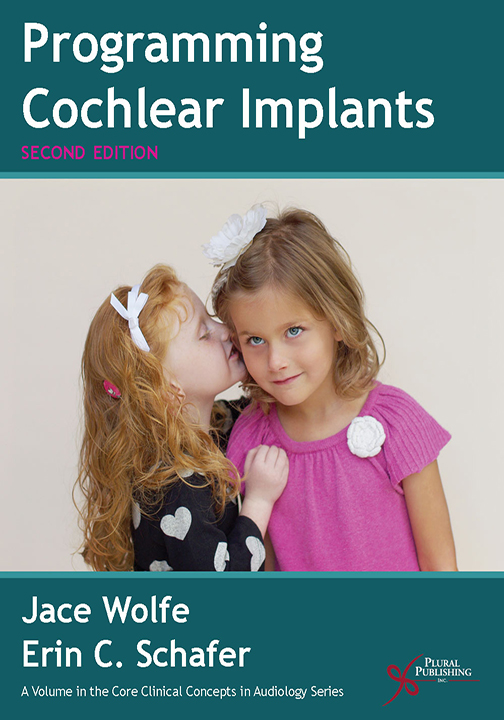
Programming Cochlear Implants.
Second Edition
Jace Wolfe, Erin C. Schafer
Details: 408 pages, 2-Color, eBook
ISBN13: 978-1-59756-708-4
© 2015 | Available
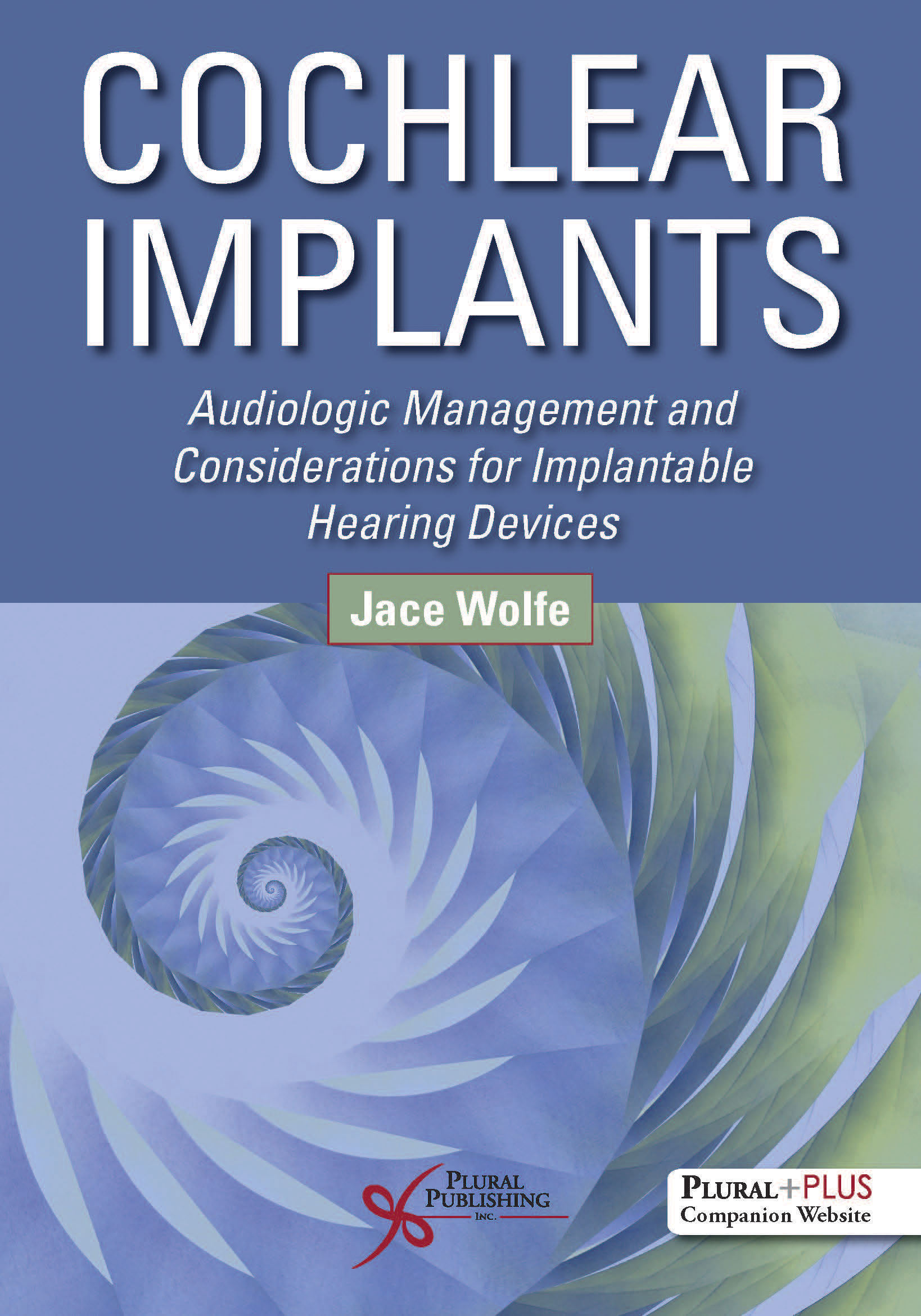
Cochlear Implants: Audiologic Management and Considerations for Implantable Hearing Devices
First Edition
Jace Wolfe
Details: 858 pages, Full Color, Hardcover, 8.5" x 11"
ISBN13: 978-1-59756-892-0
© 2020 | Available
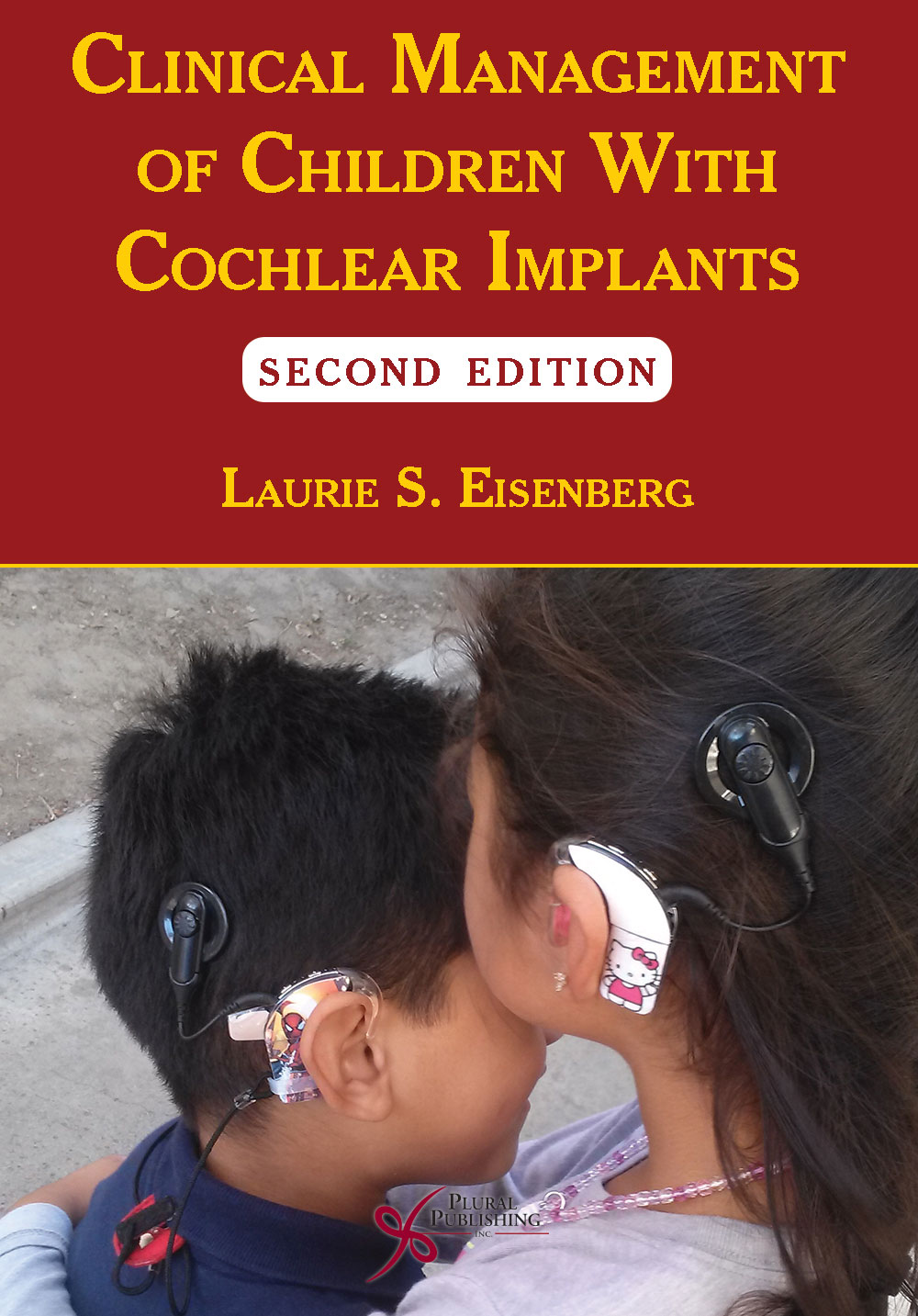
Clinical Management of Children With Cochlear Implants
Second Edition
Laurie S. Eisenberg
Details: 890 pages, B&W, Softcover, 7" x 10"
ISBN13: 978-1-59756-723-7
© 2017 | Available

